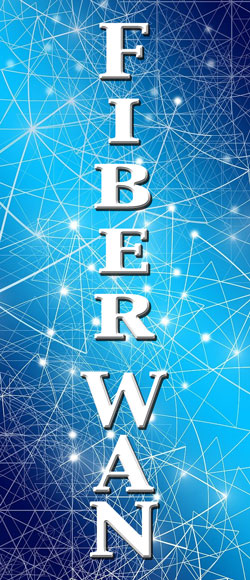 Yesterday’s Connections Don’t Cut It Anymore
Yesterday’s Connections Don’t Cut It Anymore When you started business, networking mostly involved interconnecting in-house equipment with some modest bandwidth to the outside. The rise of cloud based IT services has inverted that topology. Now you have some in-house facilities, mostly PCs and printers, with all of the heavy storage and processing done remotely. You still need decent connectivity inside, but you also need robust connections to the Wide Area Networks.
What WAN connections do you have now? A bevy of T1 lines coming in on telephone cable? DS3 bandwidth with special interfaces? Perhaps you’ve upgraded to SONET fiber optic services, such as OC3, OC12 or OC48. You can layer on more of the same if they are still be offered for new installations. But, should you?
What’s Wrong With Tried and True Telecom?
All of the outside network lines just mentioned are telephone company products. For decades, they were all that was available and you were lucky to get connected at any price. That’s changed now. The old T-Carrier and SONET technologies built on time division multiplexing are rapidly being swept away by packet based technologies based on the same Ethernet standard that runs on your local area networks.
Those legacy services have some issues. They require specialized interfaces that are unique to each service level. If you want to upgrade, you’ll need a truck roll to replace at least an interface card and perhaps a complete box. The copper and fiber services aren’t compatible at all. If you have copper, say T1 lines, and want to upgrade to fiber, say OC3 SONET, you need a complete re-do. Once you get on fiber, you can upgrade to higher speeds by swapping out interfaces again, but only with major jumps in bandwidth levels.
There are two other issues you should know about. Telephone companies, which, by law own the copper telco lines, are starting to abandon these lines because demand is dwindling for such low bandwidth and the copper is aging and disintegrating. It’s become a maintenance problem and an expensive one. You may not be able to order new service or add additional lines. Eventually, the lines you have will be disconnected.
The second issue is cost. There is no great build-out of legacy services going on. That’s all been done. There is also no competition in the marketplace, especially on copper lines. With increasing maintenance costs, prices have pretty much bottomed and, in some cases, may be going up. There are much better options available on a cost per Mbps basis and they are much more scalable.
Ethernet over Fiber is the New Gold Standard
Your next bandwidth service or replacement service should be what is known as Carrier Ethernet or Ethernet over Fiber. This will give you all the bandwidth you need both now and in the future. It’s been built-out by multiple carriers, most of which are not incumbent telephone companies. So competitive is this market, that you may be shocked to see how much bandwidth you can get for your current budget.
Ethernet over Fiber or EoF WAN is directly compatible with your current Ethernet LAN. You just plug in a standard copper or fiber link to your network and you’re ready. What’s more, the bandwidth is easily scalable in small increments. The maximum speed is determined by the speed of the Ethernet Port that is installed by your service provider. If you get a Gigabit port, you can start off at 10 Mbps and then move to 50, 100, 250 or more up to 1000 Mbps any time you want. All it takes is a phone call or do it yourself on a web interface. No hardware changes needed. Need higher bandwidth? Get a 10 Gbps or 100 Gbps port installed.
There are two basic types of connections. First is dedicated Internet access. This is what gets you to the Internet, but without all the line speed variations that are inherent with shared bandwidth connections like cable, DSL cellular or satellite broadband. Pretty much every company needs a good solid Internet connection.
The other type of connection is a direct point to point dedicated line service. This gives you a more secure connection, especially if you encrypt the data. It’s also more solid, with less jitter, latency and packet loss than you’ll get through the Internet. Dedicated lines are great for linking business locations and connecting to your cloud service provider. With the right direct connection, you may not be able to perceive any performance loss even though your IT resources have moved from down the hall to across the country.
Do you need to expand your connectivity or want to get more bandwidth for less money than you are currently paying? Find out what Fiber Optic WAN Network services are available for your business locations now.

